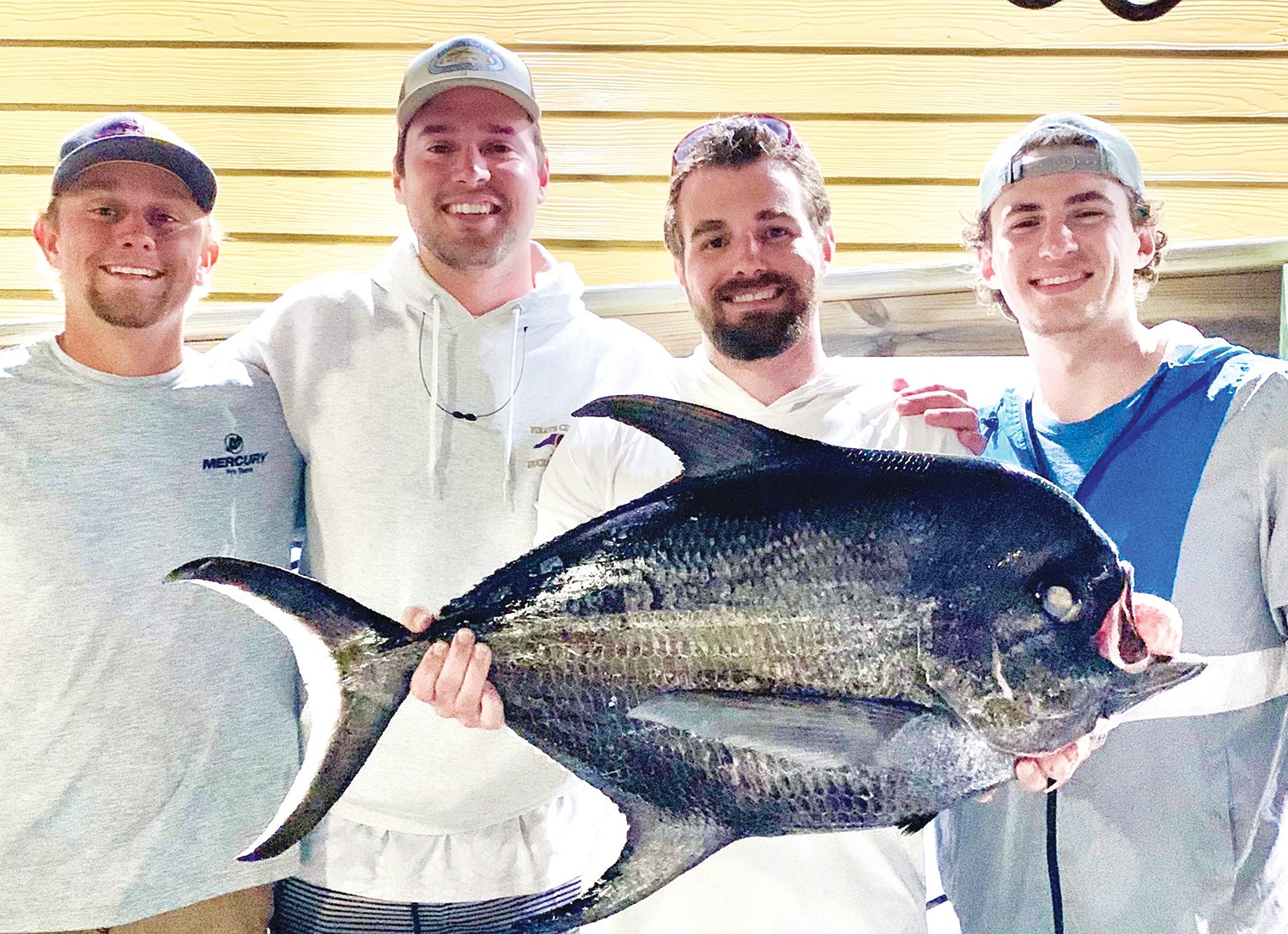Another state record saltwater fish caught
Published 2:15 pm Tuesday, May 9, 2023
|
Getting your Trinity Audio player ready...
|
Dove hunters and duck hunters will have their usual seasons, split into three portions, with the same basic framework but a few species changes among the waterfowl.
Dove seasons will be Sept. 2-Oct. 7, Nov. 11-25 and Dec. 9-Jan. 31, 2024, with a daily bag limit of 15 birds. Hunting is 30 minutes before sunrise until sunset in all three splits.
Duck seasons will be Oct. 19-21 (inland zone), Oct. 27-28 (coastal zone), Nov. 4-25 and Dec. 19-Jan. 31, 2024 (both zones). Bag limits will be six per day, with a bunch of species restrictions: no more than four sea ducks, no more than four mallards (two hens), three wood ducks, two redheads, two canvasbacks, two black ducks (after Nov. 19 only), one pintail, one mottled duck (after Nov. 19 only) and one fulvous whistling duck. Before Jan. 9, the limit on scaup (bluebill) will be one per day; after Jan. 9, it will be two per day. Hunters can take five mergansers per day, two of which can be hooded mergansers.
The early teal season is Sept. 13-30, east of US 17 only, with a six-bird daily limit.
The only real change is the increase in the mallard limit from two to four, with two hens allowed this season instead of one.
Youth and Military/Veteran waterfowl days are Feb. 3 and 10, 2024. Youth ages 17 and under are allowed to hunt these days with the same bag limits.
The basic framework of other waterfowl seasons remains intact.
Canada geese can be hunted in the resident population zone Sept. 1-30, with a 15-goose daily bag limit. During this early season, west of US 17, hunters can hunt until 30 minutes after sunset, with unplugged guns and electronic callers. In the resident area, the season is open Oct. 19-28, Nov. 4-25 and Dec. 18-Feb. 10, 2024, with a 5-goose limit. In the Northeast Zone, the season is Dec. 28-Jan. 31, 2024, with a 2-goose limit.
Brant can be hunted Dec. 28-Jan. 31, 2024, with a 1-bird limit. Light geese (snows) can be hunted Oct. 10-Feb. 10, 2024, with a 25-goose limit and Feb. 12-March 31 by permit only.
The permit-only tundra swan season is Nov. 4-Jan. 31, 2024. There is a 1-bird season limit.
Woodcock season is Dec. 11-Jan. 31, 2024, with a 3-bird daily limit. Hunters can target marsh hens from Sept. 2-Nov. 22, with the daily limit 15 birds for king and clapper rails, gallinules and moorhens, and 25 sora and Virginia rails. Snipseason is Oct. 27-Feb. 28, with an 8-bird daly limit.
Another state-record fish
North Carolina has a new state-record and potential world-record saltwater fish on which to brag, but seriously, I’ve never heard of it before, and I’m betting most of you haven’t.
The N.C. Division of Marine Fisheries recently certified a 26-pound, 11.4-ounce Bigscale Pomfret as its first state record for that species. The fish was caught April 21 by Jeremiah Elliott of Greenville, who was fishing 50 miles east of Morehead City with friends.
Elliott’s fish is better than 6 pounds larger than the existing all-tackle record recognized by the International Game Fish Association.
He caught the fish on an Alutecnos Albacore 80 reel spooled with 80-pound test line on an RJ Boyle swordfish rod. Elliott’s fish was 35.5 inches long (fork length) and had a 30.75-inch girth.
A Bigscale Pomfret is also known as the long-finned bream. It is a member of the family Bramidae, and although on first glance it resembles a permit or African pompano, it is related to neither, which are members of the jack family.




